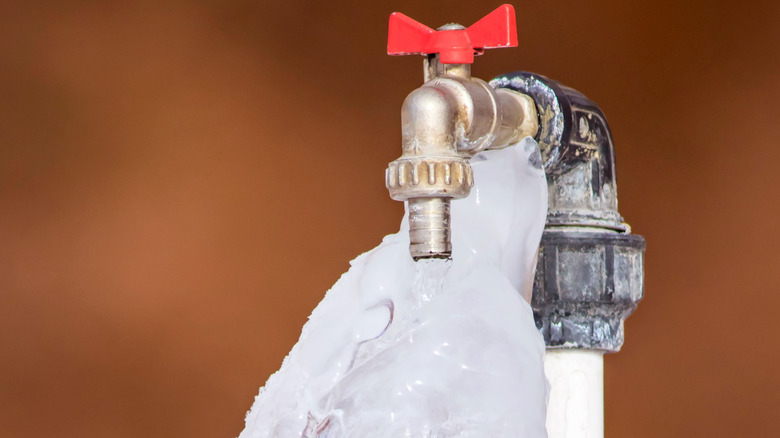Safeguarding Your Pipes from Freezing Issues: Critical Strategies
Schedule And PricingPresented here in the next paragraphs you can find additional superb data in regards to Helpful Tips to Prevent Frozen Pipes this Winter.

Cold weather can wreak havoc on your pipes, especially by freezing pipelines. Here's just how to prevent it from occurring and what to do if it does.
Introduction
As temperatures decrease, the threat of frozen pipes rises, possibly resulting in expensive fixings and water damage. Understanding exactly how to avoid icy pipelines is crucial for property owners in chilly climates.
Comprehending Frozen Pipelines
What causes pipes to freeze?
Pipes ice up when revealed to temperatures listed below 32 ° F (0 ° C) for expanded durations. As water inside the pipelines freezes, it expands, putting pressure on the pipeline wall surfaces and potentially causing them to burst.
Threats and problems
Icy pipes can cause water disruptions, residential property damages, and pricey fixings. Burst pipes can flooding homes and cause substantial structural damages.
Indicators of Frozen Water Lines
Recognizing frozen pipelines early can avoid them from breaking.
Exactly how to identify frozen pipelines
Look for reduced water flow from taps, unusual odors or noises from pipes, and visible frost on exposed pipes.
Avoidance Tips
Shielding at risk pipes
Wrap pipes in insulation sleeves or make use of warm tape to safeguard them from freezing temperatures. Focus on pipelines in unheated or outside areas of the home.
Home heating methods
Maintain interior spaces properly warmed, particularly locations with plumbing. Open up cupboard doors to permit warm air to flow around pipes under sinks.
Protecting Exterior Plumbing
Yard hose pipes and exterior faucets
Detach and drain garden tubes before wintertime. Mount frost-proof spigots or cover outside taps with insulated caps.
What to Do If Your Pipes Freeze
Immediate actions to take
If you believe icy pipes, keep faucets available to relieve pressure as the ice melts. Utilize a hairdryer or towels soaked in warm water to thaw pipelines gradually.
Long-Term Solutions
Architectural changes
Take into consideration rerouting pipelines far from outside wall surfaces or unheated locations. Include added insulation to attic rooms, cellars, and crawl spaces.
Updating insulation
Purchase top notch insulation for pipelines, attic rooms, and wall surfaces. Proper insulation helps maintain consistent temperatures and decreases the threat of frozen pipelines.
Conclusion
Preventing frozen pipelines requires positive actions and quick reactions. By comprehending the reasons, indicators, and safety nets, homeowners can safeguard their plumbing during cold weather.
5 Ways to Prevent Frozen Pipes
Drain Outdoor Faucets and Disconnect Hoses
First, close the shut-off valve that controls the flow of water in the pipe to your outdoor faucet. Then, head outside to disconnect and drain your hose and open the outdoor faucet to allow the water to completely drain out of the line. Turn off the faucet when done. Finally, head back to the shut-off valve and drain the remaining water inside the pipe into a bucket or container. Additionally, if you have a home irrigation system, you should consider hiring an expert to clear the system of water each year.
Insulate Pipes
One of the best and most cost-effective methods for preventing frozen water pipes is to wrap your pipes with insulation. This is especially important for areas in your home that aren’t exposed to heat, such as an attic. We suggest using foam sleeves, which can typically be found at your local hardware store.
Keep Heat Running at 65
Your pipes are located inside your walls, and the temperature there is much colder than the rest of the house. To prevent your pipes from freezing, The Insurance Information Institute suggests that you keep your home heated to at least 65 degrees, even when traveling. You may want to invest in smart devices that can keep an eye on the temperature in your home while you’re away.
Leave Water Dripping
Moving water — even a small trickle — can prevent ice from forming inside your pipes. When freezing temps are imminent, start a drip of water from all faucets that serve exposed pipes. Leaving a few faucets running will also help relieve pressure inside the pipes and help prevent a rupture if the water inside freezes.
Open Cupboard Doors
Warm your kitchen and bathroom pipes by opening cupboards and vanities. You should also leave your interior doors ajar to help warm air circulate evenly throughout your home.

I'm very interested by Helpful Tips to Prevent Frozen Pipes this Winter and I really hope you enjoyed the entire page. I beg you take the time to promote this post if you appreciated it. I recognize the value of your readership.
Estimating